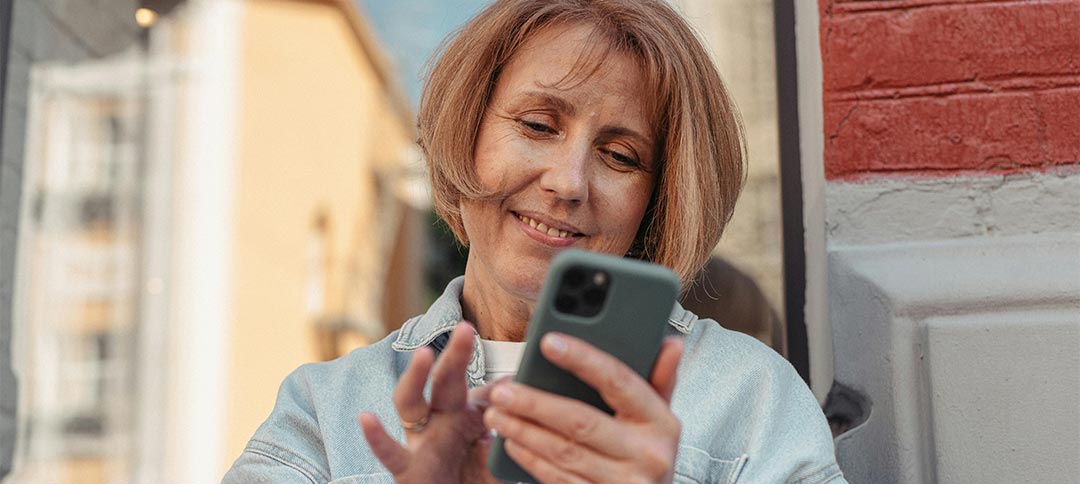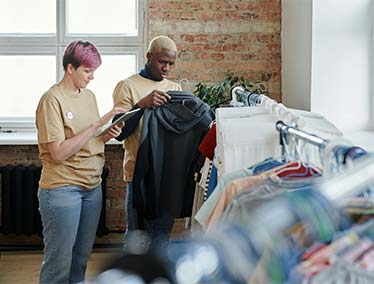Planning a nonprofit event is hard work, but getting people to show up and support it? That’s where the real challenge begins. You can have the best venue, the best cause, and even the best snacks, but if no one knows about your event, it won’t go far.
That’s where smart, simple promotion comes in. You don’t need a giant marketing team or a huge budget, you just need the right steps, the right message, and the right support. You can have the best venue, the best cause, and even a popular draw like a charity golf tournament fundraiser, but if no one knows about your event, it won’t go far.
We’ve spent years working side by side with nonprofits, big and small, and we’ve seen what works. In this guide, we’re going to walk you through how to get the word out, reach new people, and get your community excited to show up and give.
Nonprofit event promotion basics
What is nonprofit event promotion?
Promoting a nonprofit event means letting people know it's happening, and making them care enough to show up. It’s more than just posting a flyer or sending an email. It’s about telling a story that connects your event to something bigger: your mission, your community, and the change you’re trying to create.
When we say “promotion,” we’re talking about all the ways you can spread the word, online, in person, through your networks, and beyond. It’s the bridge between planning and participation. Without it, even the best event can fall flat.
The good news? You don’t need fancy tools or a big team. A clear plan, a little creativity, and some heart can go a long way.
Why promoting your event matters
We’ve seen it again and again, when nonprofits take the time to promote their events well, more people show up, give more, and stay connected long after the event ends.
Good promotion does a few powerful things:
- It helps you raise more funds by getting in front of the right people.
- It brings in new supporters who’ve never heard of your cause before.
- It reminds your current donors and board members why your work matters.
- And most importantly, it makes your mission feel real and exciting to your community.
Promotion isn’t just about filling seats. It’s about growing your reach and building long-term support for your cause.
Start with a strong foundation
Define your event goals and target audience
Before you send a single email or post on social media, pause and ask: What are we trying to do here?
Not every event is just about raising money. Some events are about building awareness. Some are about bringing your community together. Others are meant to thank donors or get volunteers more involved. Knowing your main goal will help shape every decision you make, from your invites to your follow-up.
Next, think about who you’re trying to reach. Is this event for long-time donors? New folks who’ve never heard of you? Local families? Fellow nonprofits? Your messaging will look very different depending on who you’re talking to.
At Harness, we’ve worked with teams who were only targeting board members, and others who wanted to draw in the whole city. Both are great, but the key is being clear from the start.
Include a fundraising goal tracker on your event page so attendees can see how close you are to reaching your target.
Build the right message and branding
Once you know your goal and audience, it’s time to figure out what you’re going to say, and how you’re going to say it.
Keep your message simple. People should be able to look at your flyer, email, or event page and immediately know:
- What the event is
- Why it matters
- How they can be part of it
Use calls to action that are clear and specific. “Join us for a night of giving” is good. “Reserve your ticket now” is better. “Help local kids get school supplies, buy your ticket today” is even stronger.
Make sure your marketing materials look and feel like you. If your nonprofit is fun and scrappy, your event should feel that way too. If you're formal and traditional, reflect that in your design. Consistency builds trust.
When promoting your event, you might also highlight community service ideas your nonprofit supports, so people see how engagement extends beyond attendance.
Leverage your digital channels
Optimize your website for event promotion
Your website is one of the first places people will check when they hear about your event, make it count.
Start by creating a dedicated event page. It doesn’t need to be fancy, but it should have the basics: what the event is, why it matters, how to join, and a clear call to action (like "Get Tickets" or "Register Now"). Bonus points if you can add impact statements, tell visitors what their attendance or donation will help make possible.
Keep it simple, mobile-friendly, and easy to find. We’ve seen nonprofits bury their event info three clicks deep, and lose people in the process. Don’t make supporters dig. Link to the event right on your homepage if you can.
And if you’re using Harness, we can help you design a site that not only looks great but also helps you track who’s coming and how they found you.
Launch a multi-channel marketing campaign
Promotion works best when your message shows up in multiple places, not just one.
Think of your channels like tools in a toolbox:
- Email is great for direct outreach
- Blog posts give you space to tell deeper stories
- Text messages offer quick reminders
- Paid ads (if your budget allows) can help you reach new audiences
You don’t need to use every channel, but you should repeat your core message wherever you are. Consistency builds recognition, and repetition drives action.
We always say: talk to your audience where they already are. If your supporters live on Facebook, meet them there. If they prefer emails, make that your focus. Use what works, and don’t be afraid to test.
Boost visibility with SEO and Google Ad Grant
If you're not thinking about search engine traffic, you're missing out on people actively looking for events like yours.
Start with the basics: add keywords to your event page (like “community fundraiser in [your city]” or “nonprofit gala near me”). Use plain language that matches what someone might type into Google.
And if your nonprofit qualifies, you can access the Google Ad Grant, which gives you up to $10,000 a month in free ads. Yes, free.
We’ve helped partners use this to drive hundreds of extra visits to their event pages. It’s a powerful (and underused) tool that can make a real difference in how many people find and attend your event.
Amplify your reach with social media
Create engaging social media posts
Social media is one of the fastest (and cheapest) ways to get the word out about your nonprofit event. But the secret isn’t just to post, it’s to make it worth someone’s attention.
Think about what makes you stop scrolling. It’s usually something short, eye-catching, and human. Your posts should do the same.
One creative promotion tactic is to engage influencers for nonprofits who share your mission, helping you reach new audiences organically.
Start by sharing the basics, what the event is, when and where, and why it matters. Then, mix it up with:
- Behind-the-scenes prep
- Spotlights on team members or board members. Promoting well isn’t just about tools—it helps to have a fundraising team where someone is designated to handle outreach, social media, and follow up.
- Countdown posts (“Only 3 days to go!”)
- Stories from people your event will help
And don’t forget to include a clear next step, whether that’s “RSVP now,” “Tag a friend,” or “Share this post.”
Use social media accounts to spread the word
You don’t need to be on every platform. Pick one or two where your community already spends time, maybe that’s Facebook, Instagram, or LinkedIn, and focus your energy there. Online posts work even better when you sprinkle in giving quotes that capture the spirit of your mission.
Another way to boost attendance and visibility is to gain sponsorship for an event, which provides both financial and promotional support.
The trick is to show up consistently. One post won’t do it. Schedule regular updates, remind people what’s coming, and make it easy for them to act. Every post should bring them one step closer to attending or donating.
And if you're hosting an in-person event, use location tags and relevant hashtags. That small step can help locals discover your post, even if they’re not following your account yet.
We’ve seen nonprofits go from 10 RSVPs to 100 just by showing up online with intention. It really works.
Boosting attendance boosts revenue—and when you combine that with ideas from what are the most profitable fundraisers, you can choose events that maximize both reach and net income.
One high-impact option is a gala event, which combines storytelling, networking, and entertainment to maximize visibility.”
Empower your community to help
One of the most powerful tools you have? Your supporters.
Ask friends, volunteers, staff, and board members to share your posts. Give them a quick script or sample message they can copy and paste. The easier you make it, the more likely they’ll do it.
You can even create a “sharing kit” with graphics, post ideas, and hashtags. Make it feel like a team effort.
People trust what comes from their network, way more than a brand ad. When your supporters post about your event, it adds a personal touch that spreads farther and sticks better.
Once you’ve picked your event format, you’ll need promotion — and if you want help selecting the right format, our guide to fundraising event ideas is a strong next step.
For events that require high-touch communication and support, check how ChatGPT for nonprofits can power chat assistants and FAQs for attendees.
Tap into peer networks and partnerships
Launch a peer-to-peer fundraising campaign
If you’ve never tried peer-to-peer fundraising, now’s the time. It’s one of the easiest ways to expand your reach without doing all the heavy lifting yourself.
Here’s how it works: you give your supporters the tools to raise money on your behalf. They create their own pages, tell their own stories, and ask their friends and family to give. And because it’s coming from someone they trust, those asks often go farther than anything your team could write.
To make it easy, give them templates for what to say, quick how-to instructions, and a clear goal. You can even make it fun with leaderboards or friendly competition.
Partner with local businesses
Local businesses love getting involved in community events, but they need to know what’s in it for them.
Offer ways for them to support you that also give them visibility. That could mean:
- Sponsoring a booth or giveaway
- Sharing your event on their social media
- Displaying flyers in their storefront
- Donating items for raffles or auctions
Make it a win-win. A business gets to show they care about the community, and your nonprofit gets more eyes (and hearts) on your mission.
Lean into word of mouth marketing
Sometimes the best promotion doesn’t cost a thing, it’s just people talking.
Encourage your event attendees and donors to tell their networks about your event. Ask for testimonials. Share quotes on your website and social channels. These real voices build trust.
And don’t be shy about asking folks to spread the word. Say, “If you know someone who’d love this event, forward them this invite.” It sounds small, but it works.
Engage and convert during the event
Provide a meaningful attendee experience
You’ve done the hard work to get people in the door. Now it’s time to make it count.
The best nonprofit events don’t just feel organized, they feel personal. Greet people warmly. Let them know what to expect. If you can, share a short story that connects the event to your mission. Give folks a reason to care beyond the free snacks.
People remember how they felt at your event more than what was said. That feeling is what turns a one-time attendee into a long-term supporter.
Capture real-time content to reuse
This is something a lot of teams forget, but it’s a game-changer.
While the event is happening, take pictures. Record short videos. Ask guests if they’d be willing to say a few words on camera about why they showed up.
All of this becomes content you can use later, in emails, on your blog, in next year’s promo. It shows your event was real, active, and worth attending.
And if you’re posting live during the event, it helps build FOMO (fear of missing out) for anyone who didn’t come this time. That makes them way more likely to show up next time.
A few candid shots can go a long way, don’t let that moment pass.
Follow up and build lasting connections
Thank attendees and highlight impact
Once your event wraps, don’t just move on, this is where real relationship-building starts.
Send a thank-you email within a day or two. Keep it short and warm. Say thanks, remind them what their support helped make possible, and share one small win, like “Thanks to you, we raised enough to fund 100 meals for local families.”
Even better? Include a few photos from the event or a quick highlight reel if you captured video. People love seeing themselves and reliving the moment.
This small step builds trust. It tells your attendees: “You mattered, and we noticed.”
Use the momentum to promote future events
After a successful event, your community is paying attention, don’t let that momentum fade.
Add attendees to your mailing list (with permission). Invite them to follow your social channels. Post an event recap blog or video. Keep the energy going by showing the real impact they helped create.
And if you already know about your next event, start planting the seed now. A quick “Save the date” or early teaser keeps your supporters engaged and looking forward.
Organizations lock in early RSVPs and even get repeat donors just by staying visible in that first week after an event. The follow-up window is powerful, use it well.
Reach more people
Promoting a nonprofit event doesn’t have to be overwhelming. With the right steps, and a little bit of heart, you can reach more people, raise more funds, and grow stronger support for your mission.
You don’t need to be a marketing expert. You just need a plan that works and a partner that understands what nonprofits really need.
That’s where we come in. At Harness, we combine smart tools with real-world nonprofit experience to help you not just run events, but make them matter. From personalized websites to ongoing support, we’re here to help you turn every event into a powerful moment of connection.




